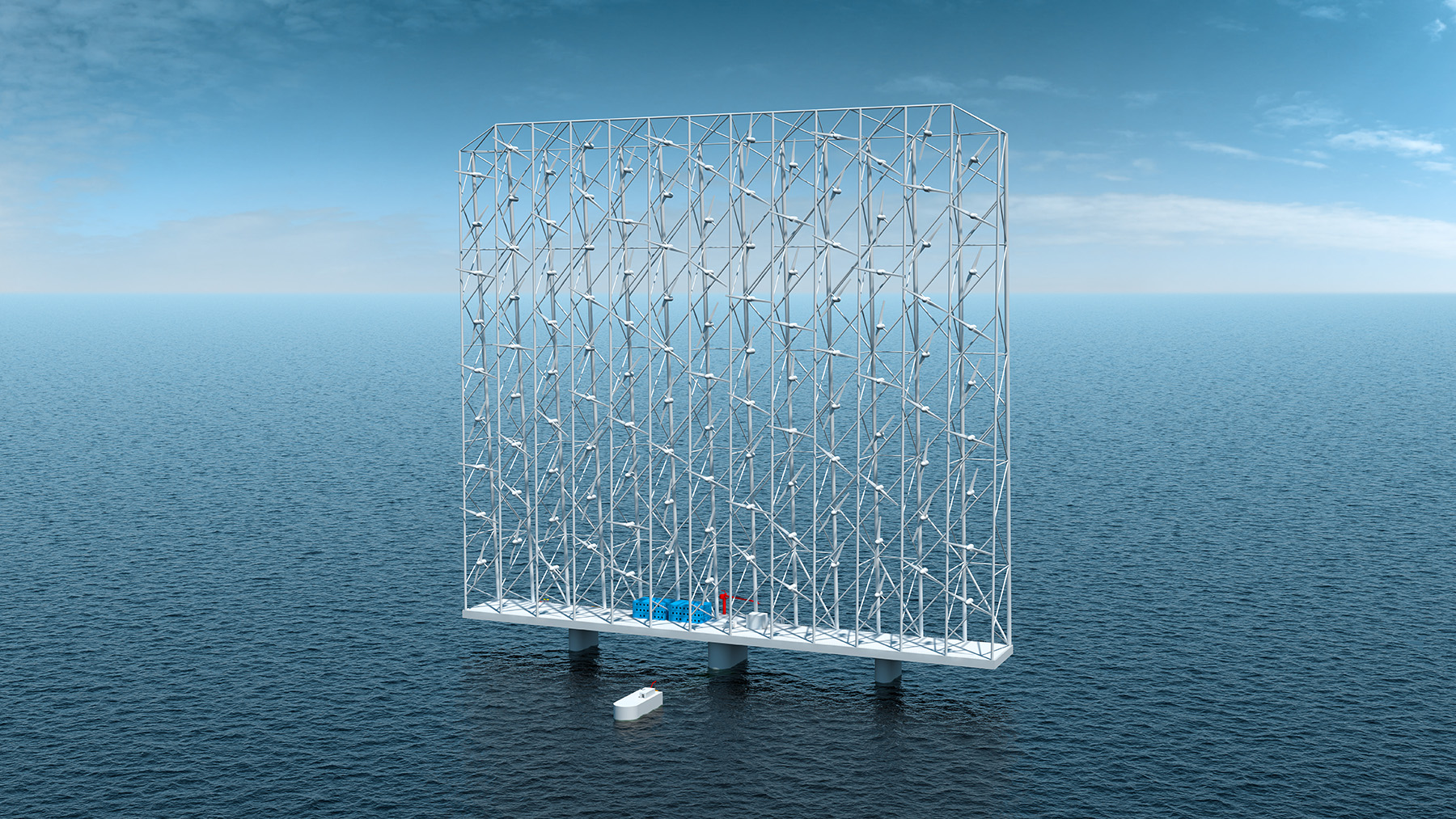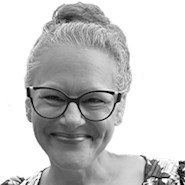
By Catherine A. Cardno, Ph.D.
Wind Catching Systems AS, a small company based in Oslo, Norway, has an admirable goal: supplying the world with affordable and sustainable offshore wind energy. To that end, the company has developed a concept for a floating, stacked wind turbine system that will generate five times the energy that can be generated by one conventional offshore floating wind turbine.
At optimal performance, one structurally sound, stacked system could generate the power necessary for 80,000 European households, according to the company. Multiple systems can be installed at a site to create an array.
The design is inventive: a 300 m tall and 350 m wide steel lattice frame will hold a series of 1 MW turbines — 126, to be exact. Despite the smaller-than-typical size of these turbines, the system captures more energy than a larger, single turbine because of two characteristics. First, there are more turbines, which cover twice the swept area of the largest available single-turbine systems.
Second, the turbine blades are shorter — just 15 m in length rather than the 110 m of the largest single-turbine systems on the market. The shorter turbine blades can generate more power at higher wind speeds than can larger, single-turbine systems, the company says. This means that the wind system turbines increase electricity production when other systems that use large, single turbines have reached their maximum generation capacity.
The turbine system would be built atop a semisubmersible hull, and the entire system would rotate via a passive yaw function designed to maximize the performance of the fixed-in-place turbines. The floating platforms would be anchored to the seabed.
The system has been designed for the relatively long life — in wind turbine terms — of 50 years. And once the system reaches the end of its life span, it can be dismantled and recycled, according to the company.
Maintenance cranes and elevators have been incorporated into the system’s design so that it can function as a self-contained operation and maintenance structure, eliminating the need for special crane vessels to be called to an offshore location for repairs. A high-voltage substation is also integrated into each system’s design to minimize the need for cabling on the site.
The company believes that using the vast amount of available offshore wind to affordably generate power will help combat climate change. The company’s efforts support five of the 17 United Nations’ Sustainable Development Goals.
These goals* are:
- No. 7 — Ensuring access to affordable, reliable, sustainable, and modern energy.
- No. 9 — Building resilient infrastructure, promoting inclusive and sustainable industrialization, and fostering innovation.
- No. 12 — Ensuring sustainable consumption and production patterns.
- No. 13 — Taking urgent action to combat climate change and its impacts.
- No. 14 — Conserving and sustainably using the oceans, seas, and marine resources for sustainable development.
Wind Catching Systems, founded in 2017, is working in collaboration with energy company Aibel and the Institute for Energy Technology. The company is owned by Ferd, a holding company, and North Energy. All are located in Norway.
The construction of a demonstrator could start as early as this year, according to the company.
*Source: The 17 Goals at sdgs.un.org/goals
Catherine A. Cardno, Ph.D. is the managing editor of Civil Engineering Online.



